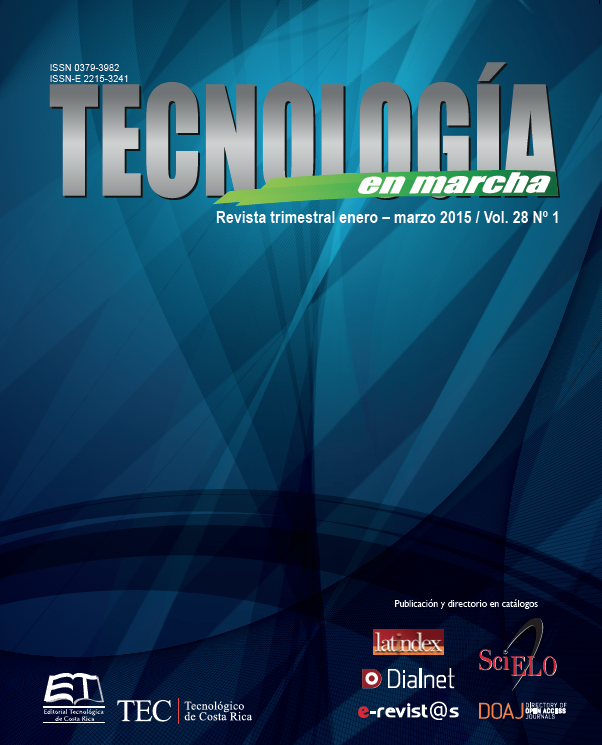Botanical descriptors for Ricinus communis germplasm characterization obtained from different Costa Rica’s regions
Main Article Content
Abstract
Castor´s oil (Ricinus communis) is an oilseed plant. It´s used in various industries due to the high quality of its oil. Faced with the problem of the use of fossil fuels and growing needs to find alternative energy sources, castor´s oil shows high potential as a feedstock for biodiésel production. Countries like Brazil, Ecuador, Venezuela, Colombia and Mexico have been improving varieties of this specie presenting optimal levels of production and management research for industrialization. The major goal of this study was the evaluation and selection of botanical and morphological descriptors appropriated for germplasm characterization of Ricinus communis obtained from different country locations. Descriptive statistics analysis were performed including Principal Component Analysis (PCA) and Hierarchical Ascendant Classification (CJA) analysis of 28 morphological characters (vegetative and reproductive) from 50 accessions of castor´oil samples collected from nine Costa Rica’ life zones. The results showed significant statistics values for length of cluster and number of fruits per cluster, length/width ratio fruit, weight fruit, length/width ratio seed and weight seed, all these with higher correlations values (>45%).
However, PCA showed high variability data, which is frequent among wild individuals; mainly due to their seed´s dispersion mechanisms and the diversity of the different collected areas. CJA showed three main groups ordered by correlations between size and number of fruits, length/ width ratio fruit, fruit weight, length/width ratio seed and seed weight, all these variables can be used as indicators for the castor´oil morphological characterization for this country.
Article Details
Los autores conservan los derechos de autor y ceden a la revista el derecho de la primera publicación y pueda editarlo, reproducirlo, distribuirlo, exhibirlo y comunicarlo en el país y en el extranjero mediante medios impresos y electrónicos. Asimismo, asumen el compromiso sobre cualquier litigio o reclamación relacionada con derechos de propiedad intelectual, exonerando de responsabilidad a la Editorial Tecnológica de Costa Rica. Además, se establece que los autores pueden realizar otros acuerdos contractuales independientes y adicionales para la distribución no exclusiva de la versión del artículo publicado en esta revista (p. ej., incluirlo en un repositorio institucional o publicarlo en un libro) siempre que indiquen claramente que el trabajo se publicó por primera vez en esta revista.

